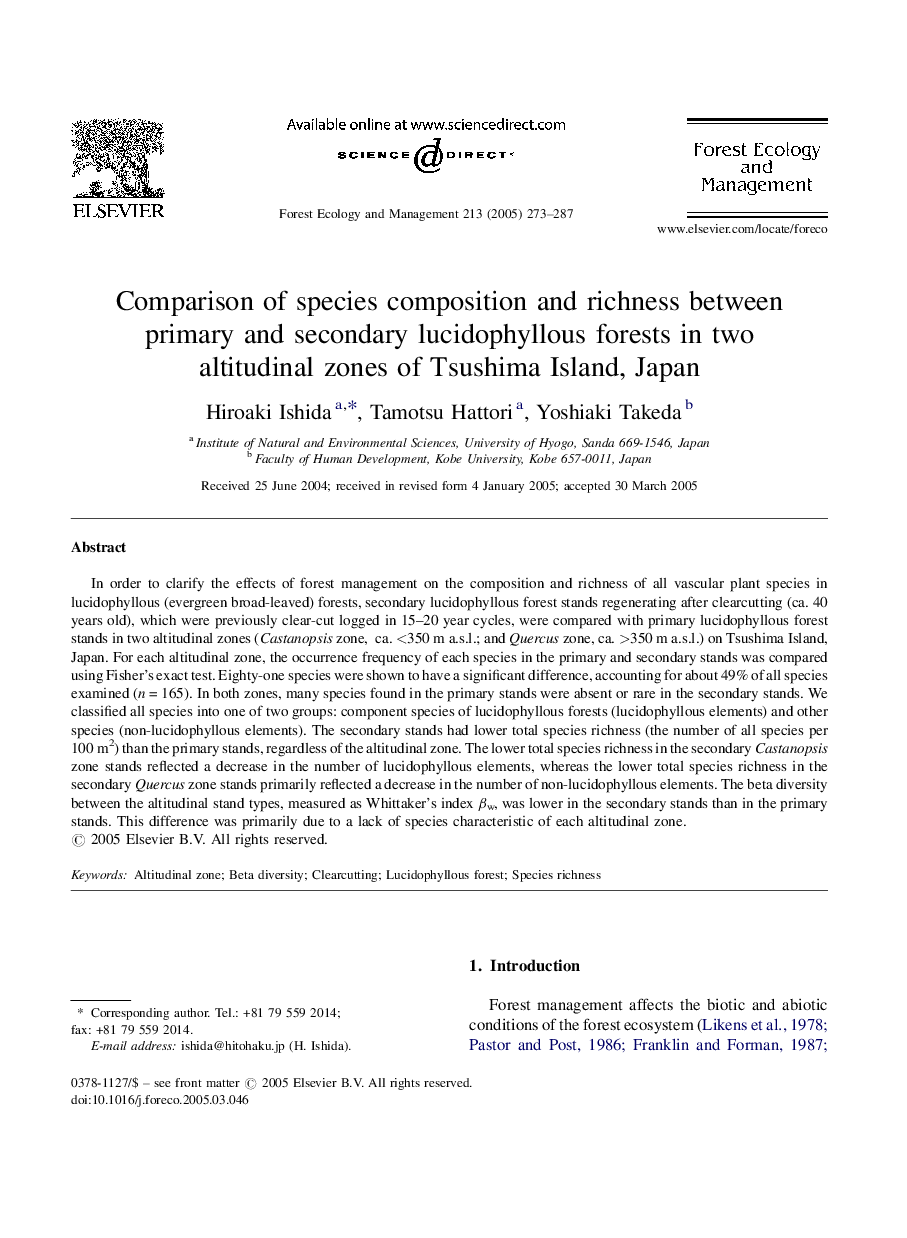| Article ID | Journal | Published Year | Pages | File Type |
|---|---|---|---|---|
| 9620280 | Forest Ecology and Management | 2005 | 15 Pages |
Abstract
In order to clarify the effects of forest management on the composition and richness of all vascular plant species in lucidophyllous (evergreen broad-leaved) forests, secondary lucidophyllous forest stands regenerating after clearcutting (ca. 40 years old), which were previously clear-cut logged in 15-20 year cycles, were compared with primary lucidophyllous forest stands in two altitudinal zones (Castanopsis zone,  ca. <350 m a.s.l.; and Quercus zone, ca. >350 m a.s.l.) on Tsushima Island, Japan. For each altitudinal zone, the occurrence frequency of each species in the primary and secondary stands was compared using Fisher's exact test. Eighty-one species were shown to have a significant difference, accounting for about 49% of all species examined (n = 165). In both zones, many species found in the primary stands were absent or rare in the secondary stands. We classified all species into one of two groups: component species of lucidophyllous forests (lucidophyllous elements) and other species (non-lucidophyllous elements). The secondary stands had lower total species richness (the number of all species per 100 m2) than the primary stands, regardless of the altitudinal zone. The lower total species richness in the secondary Castanopsis zone stands reflected a decrease in the number of lucidophyllous elements, whereas the lower total species richness in the secondary Quercus zone stands primarily reflected a decrease in the number of non-lucidophyllous elements. The beta diversity between the altitudinal stand types, measured as Whittaker's index βw, was lower in the secondary stands than in the primary stands. This difference was primarily due to a lack of species characteristic of each altitudinal zone.
Related Topics
Life Sciences
Agricultural and Biological Sciences
Ecology, Evolution, Behavior and Systematics
Authors
Hiroaki Ishida, Tamotsu Hattori, Yoshiaki Takeda,
